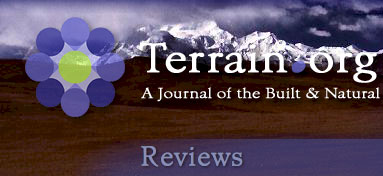
 |
|
|
A Symbiosis of Poem and Painting Derek Sheffield reviews God, Seed: Poetry & Art About the Natural World, by Rebecca Foust and Lorna Stevens
To meet these challenges, it helps to have a visual artist in your corner. Poet Rebecca Foust and artist Lorna Stevens achieve a symbiosis in God, Seed: Poetry & Art About the Natural World that makes a journey rich in sound and shape, hue and sense. The book is organized in three clearly defined sections. The first section abounds with odes and pleasures. There’s fruit and sex and insects—what more could a body ask for? The language is accessible and muscular and relies much on words of Anglo-Saxon origin, as in these lines from “Lakemont Park”: Then the carnival light Or these from “Mount Ellinor Hike”: Deer sausage thick as my thigh The imagery, sounds, and rhythms all have a little soil clinging to them. They are sensual and convincing. Just when you think the book is all juice and joy, it darkens in the second section where a more Latinate, science-inflected language ushers in extinction and environmental degradation, both evoked through personal and general tragedy. These poems are more complex. They take more risks and aim toward a more sophisticated reader, such as the ironic poem, “Nuclear.” The queen bee of making science sing is, in my book, Pattiann Rogers, but Foust has some real zingers in the second section. In “Bee Fugue,” we hear Each saturate drop and “Teleology” offers This is darn lovely writing. The third section returns us to all the rewards there are to receive from this world. Sin and toxins may abide in their respective systems, but there’s always spring. Among all the failures arise a handful of green stems. One poem catalogues Lazarus species, animals thought extinct that have been found alive, and the final poem and painting are both titled, “Perennial.” The weaker poems in the book allow statement to overwhelm lyricism. These include “Day” and “Frog.” In “Last Bison Gone,” the language becomes journalistic: New Zealand’s huia bird, was hunted extinct except for this in the Smithsonian. Here, where information gets in the way of art, sound and rhythm become less compelling. Fortunately, there are only a few such passages in the whole book. The earlier quoted lines typify the sonic richness God, Seed offers.
There’s a section of notes at the end of the book which are helpful and interesting. They might offer a little too much or, at times, unnecessary information, but then again, they might help bring non-traditional readers of poetry to the book. That’s one aspect of God, Seed that bears noting—it has wide appeal. The poems are engaging enough for readers of poetry and accessible enough to create more such readers. Because of the environmental theme of the book, it seems appropriate to pay attention to its production. It is printed on FSC Certified paper. FSC stands for Forest Stewardship Council, an NGO (non-governmental organization) that ensures sustainable forest management. Paper bearing this certification comes from suppliers who practice sustainable and responsible methods of production and harvest. The only thing better is FSC Certified Recycled paper (100% post-consumer). For examples of environmental publications using this kind of paper, see Orion and Flyway. Foust, Stevens, and Tebot Bach earn bonus points, however, because royalties from the sale of God, Seed go to the David Brower Center in Berkeley, California, which is home to organizations working for environmental and social justice. God, Seed offers many rewards. It is a rich mix of pleasure and insight, poem and painting, and it is likely to net the poetry world some new readers.
|
|
||||||||||||||||||||||||||||||||||||||||||||||||||||||||||||||